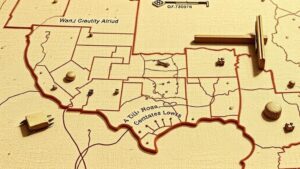Exploring Historic School Foundations for Lost Jewelry and Coins
Exploring Historic School Foundations for Lost Jewelry and Coins
In many communities, schools are not just institutions of learning; they are also repositories of history. The foundations of historic schools, some of which date back over a century, can tell tales of the communities they serve. But, buried beneath the surface of these longstanding institutions may lie items of great interest, such as lost jewelry and coins. This article delves into the fascinating pursuit of discovering these hidden treasures, exploring methodologies, historical significance, and legal implications involved in such explorations.
The Significance of Historic Schools
Historic schools are emblematic of local heritage and educational milestones. Many of these buildings were constructed during times of significant cultural or political change, and their foundations often contain remnants of daily life from those eras. A study by the National Trust for Historic Preservation highlighted that over 30% of U.S. historic schools remain in use, serving as vital community hubs. Thanks to their long-standing presence, these schools can be likened to time capsules, with their grounds potentially offering rewards for treasure hunters and historians alike.
Items of Interest: Jewelry and Coins
Among the various artifacts that can be found beneath school foundations, jewelry and coins are particularly noteworthy. Coins can serve as historical markers, often revealing trade patterns and economic statuses of past eras. For example, the discovery of a cache of coins from the early 20th century in a historic school might provide insight into the economic conditions of the time. Similarly, lost jewelry can offer a personal connection to the lives of students and faculty from bygone eras, telling individual stories within the broader context of school history.
Methodologies for Exploration
Exploring historic school foundations for lost jewelry and coins typically involves several methodologies:
- Metal Detection: Metal detectors are the most common tool for locating buried metallic objects. They can identify various metals, such as gold, silver, and copper, which are commonly found in jewelry and coins. Historical records can guide treasure hunters to specific areas within the grounds.
- Ground Penetrating Radar (GPR): This non-invasive technology allows for mapping subsurface structures without excavation. GPR can detect anomalies in the soil that may indicate the presence of buried objects, offering a more precise way to target areas of interest.
- Excavation Techniques: In cases where detectors or GPR indicate a potential find, careful excavation may be necessary. Adopting stratigraphic techniques, whereby layers of soil are removed to uncover artifacts without causing damage, is crucial.
Case Studies of Notable Finds
Many notable finds have been reported in historic school foundations, providing real-world examples of the potential treasures waiting to be discovered. For example, in 2015, a local archaeology club uncovered a cache of silver coins in the foundation of a 19th-century school in Massachusetts. The coins were determined to have been minted between 1870 and 1900 and provided valuable insights into the economic activities of the time.
Plus, in 2021, an excavation at a historic high school in California revealed a collection of brooches and rings that belonged to former students. The schools records confirmed that some of these pieces had been lost during school events, bringing joy to current students and faculty who connected with the school’s legacy.
Legal and Ethical Considerations
Before engaging in treasure hunting or excavation on historic school grounds, it is essential to consider the legal and ethical implications involved. Archaeological Resources Protection Act (ARPA) and local laws govern the excavation of archaeological sites, including school foundations. These laws often require permits and can mandate the involvement of licensed archaeologists to ensure that historical artifacts are respectfully treated and preserved.
Ethically, it is crucial to consider the context of the finds. Items should be returned to the historic school or a local museum, where they can be displayed as part of the communitys heritage. Engaging with the school community and local historians can foster a sense of collective ownership and celebration of the history that these artifacts embody.
Conclusion: The Thrill of Discovery
Exploring historic school foundations for lost jewelry and coins offers a unique intersection of education, history, and adventure. For amateur historians and treasure seekers, it provides an opportunity to connect with the past in tangible ways. But, it is crucial to approach such endeavors with respect and awareness of the historical significance of these sites. buried treasures of a historic school not only represent personal stories but also contribute to the broader narrative of the communitys heritage, making their discovery a pursuit well worth undertaking.
Actionable Takeaways:
- Research local historic schools to understand their backgrounds and historical significance.
- Acquire appropriate tools such as metal detectors and research regulations governing artifact excavation.
- Consider collaborating with local historians or archaeological societies to gain insights and support.
- Respect legal guidelines and ethical standards to ensure the responsible discovery and preservation of artifacts.


